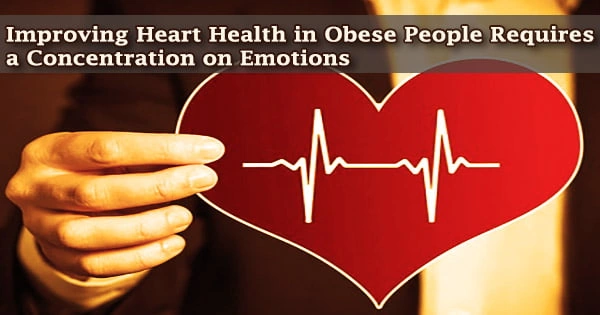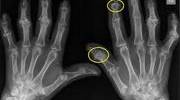According to a study presented today at EuroHeartCare ACNAP Congress 2021, an online scientific congress of the European Society of Cardiology (ESC), people living with obesity who attended a non-judgemental and individualized lifestyle modification program improved their cardiovascular and mental health in just 10 weeks.
Participants dropped weight and saw improvements in their anxiety and despair, as well as physical metrics like blood pressure.
“We focus on changing behaviors and improving people’s relationship with food,” said study author Ms. Aisling Harris, cardiac and weight management dietitian, Croi Heart and Stroke Centre, Galway, Ireland.
“Many participants have tried diets with strict rules and have fears about foods they can’t eat. Our program has no diet or meal plan, and no foods are excluded. Each person sets their own goals, which are reviewed weekly, and our approach is non-judgemental, which builds rapport and gains trust.”
“Obesity develops for multiple reasons and blaming someone for their weight can stop them from getting healthcare and advice,” said Ms. Harris. “It can lead to emotional eating and feeling too self-conscious to exercise. By identifying each person’s triggers, we can develop alternative coping strategies, all within the context of their job, caring responsibilities, external stresses, and so on. For some people, coming to a group like this might be the only social contact that they’ve had in the week or that they’ve had in years. People share experiences and support their peers.”
Obesity and overweight are both linked to a higher risk of dying from cardiovascular disease. Weight loss is indicated to lower the risk of heart disease by lowering blood pressure, blood lipids, and the chance of developing type 2 diabetes.
Obesity develops for multiple reasons and blaming someone for their weight can stop them from getting healthcare and advice. It can lead to emotional eating and feeling too self-conscious to exercise. By identifying each person’s triggers, we can develop alternative coping strategies, all within the context of their job, caring responsibilities, external stresses, and so on. For some people, coming to a group like this might be the only social contact that they’ve had in the week or that they’ve had in years. People share experiences and support their peers.
Ms. Aisling Harris
His research looked at the effects of a community-based lifestyle modification program on the physical and emotional health of patients with obesity who were referred from Galway University Hospital’s specialized bariatric department. Between 2013 and 2019, the researchers looked at data from 1,122 people.
An evaluation by a nurse, dietician, and physiotherapist, as well as baseline assessments of weight, blood pressure, cholesterol, blood glucose, fitness, and anxiety and depression levels, kicked off the 10-week Croí CLANN (Changing Lifestyle with Activity and Nutrition) program. In conjunction with each patient, individualized goals and a management strategy were developed.
For eight weeks, participants attended a 2.5-hour session once a week. The first 30 minutes were spent setting one-on-one goals. The physiotherapist then led a one-hour workout lesson.
Following that, a one-hour health promotion talk covered topics like healthy eating, portion sizes, reading food labels, emotional versus physical hunger, stress management techniques (such as meditation), physical activity, sedentary behavior, cardiovascular risk factors, and making and maintaining changes. To identify emotional eating triggers, participants utilized activity trackers and kept meal diaries.
Patients received an end-of-program assessment with the nurse, dietician, and physiotherapist last week to measure their progress. They were sent back to the hospital after that.
The average body mass index (BMI) was 47.0 kg/m2 at the start of the study, with 56.4 percent of patients having a BMI greater than 45 kg/m2. Furthermore, 26.7 percent of the participants had type 2 diabetes, and 31.4 percent had a history of depression.
The program was completed by more than three-quarters of the participants (78 percent). The 21-point Hospital Anxiety and Depression Scale (HADS) was used to assess psychosocial health, with a normal score of 0-7, mild scores of 8-10, moderate scores of 11-15, and severe scores of 16-21.
Over the duration of the training, anxiety and depression levels fell by 1.5 and 2.2 points, respectively. The proportion of people who had an anxiety score of more than 11 at the outset was 30.8 percent, but it fell to 19.9 percent; the comparable numbers for depression were 21.8 percent, but they fell to 9.5 percent.
Overall, the average weight loss was 2.0 kg, with 27.2 percent of participants shedding more than 3% of their starting weight. The percentage of people getting the required amount of physical activity increased by 31%. Total cholesterol, low-density lipoprotein (LDL) cholesterol, and blood pressure all dropped significantly.
The percentage of people with high blood pressure dropped from 37.4 percent at the start to 31.1 percent after 10 weeks. The proportion of people with type 2 diabetes who met the recommended blood sugar target increased from 47.6% to 57.4%.
Ms. Harris concluded: “Nearly eight in ten people finished the programme which suggests that the content and format were acceptable. We observed improvements across all psychosocial and health outcomes during a relatively short period indicating that this could be a model of service delivery for other centres.”
















